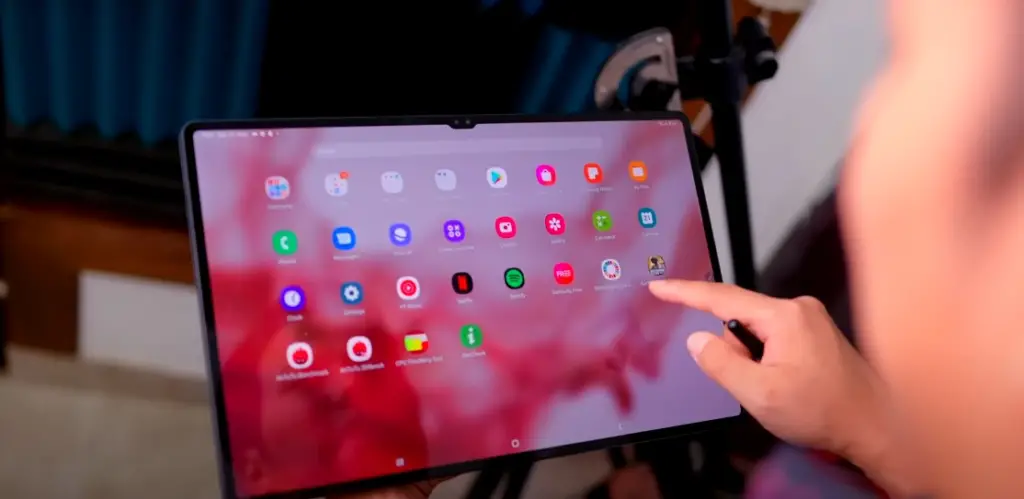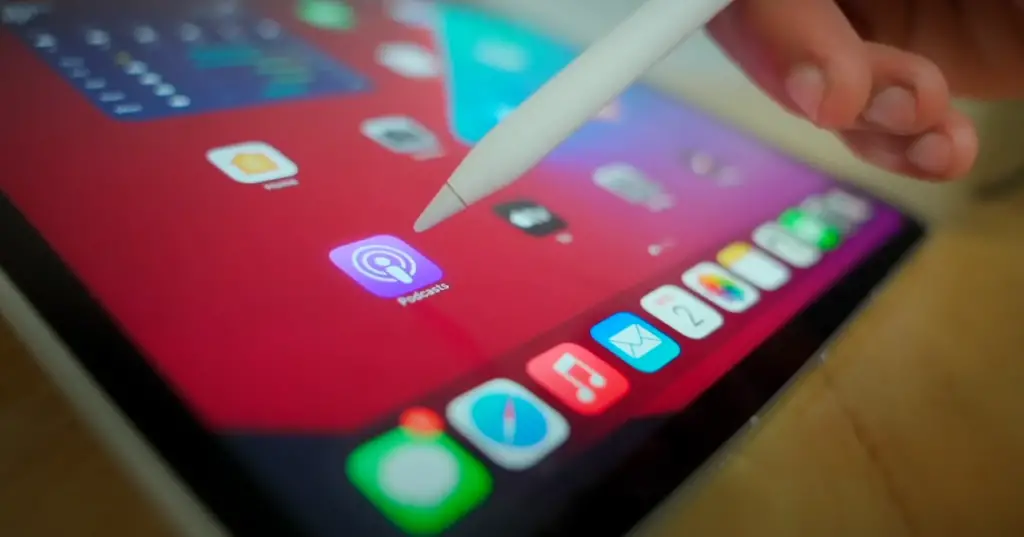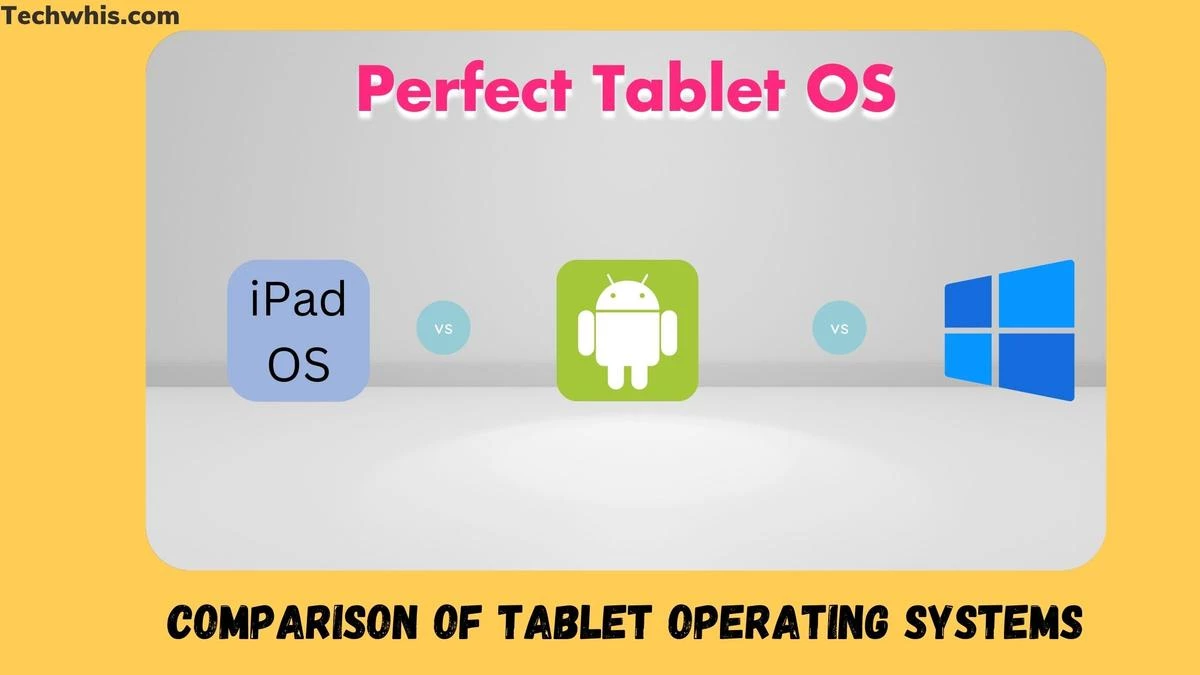Overview of Tablet Operating Systems
Tablet PCs are powered by different operating systems. There are several tablet operating systems available in the market, each with its own advantages and disadvantages. The most popular tablet operating systems are iOS, Android, and Windows. Each operating system offers a unique user experience and caters to different needs and preferences.
The simplicity and bold interface of Apple’s iOS make it a popular choice for iPad users. Its curated app store offers a wide range of tablet-specific apps. But Android is an open-source operating system that provides greater flexibility and customization options. It is available on tablets from various manufacturers, making it the most used tablet operating system.
For users who need desktop applications on their tablet and prefer a traditional computing experience, Windows is a suitable option. It offers a desktop-like experience on a tablet.
Table of Contents
Choosing the right tablet operating system depends on the user’s specific needs and preferences. Factors such as app availability, customization options, and hardware compatibility should be considered before making a decision.
Android OS
Android OS is a popular operating system for tablets that’s developed by Google. It is known for its flexibility, customization options, and wide range of features. In this section, we will discuss the features of Android OS, user experience, and security and privacy.

Features of Android OS
One of the most notable features of Android OS is its ability to customize the user interface. Users can choose from a variety of widgets, wallpapers, and themes to personalize their devices. Android OS also supports multi-tasking, allowing users to run multiple apps at the same time.
Another feature of Android OS is its integration with Google services. Users can access Google Play Store, Gmail, Google Maps, and other Google services directly from their tablet. Android OS also supports a wide range of third-party apps, making it easy for users to find and install apps that meet their needs.
User Experience
Android OS provides a user-friendly experience that is easy to navigate. The home screen is customizable, and users can access their apps and widgets with a simple swipe or tap. Android OS also provides a notification centre, which displays all notifications in one place.
One downside of Android OS is that it can be fragmented. This means that different devices may run different versions of the operating system, and some devices may not receive updates as quickly as others.
Security and Privacy
Android OS provides several security features to protect users’ data. Users can set a lock screen password, PIN, or pattern to prevent unauthorized access to their devices. Android OS also provides encryption for data stored on the device.
However, Android OS has faced criticism for its approach to privacy. Google collects data on users’ activities and uses this data to personalize ads and other services. Users can adjust their privacy settings to limit the data collected, but some users may still have concerns about the amount of data collected by Google.
iOS
iOS is the operating system developed by Apple for its iPad tablets. It is known for its intuitive user interface, smooth performance, and tight integration with Apple’s ecosystem.
Features of iOS
iOS comes with a wide range of features that make it a popular choice for tablet users. One of the most notable features of iOS is its App Store, which has a vast selection of apps that are optimized for the iPad’s larger screen. Additionally, iOS offers features such as Siri, Apple Pay, and iCloud, which provide users with seamless integration across their Apple devices.

User Experience
iOS provides a friendly interface that’s easy to use, especially for people who are new to tablets or like simple designs. The system is made to be easy to understand and quick to respond. It has smooth animations and transitions that give it a polished and professional feel.
Security and Privacy
iOS is famous for its tough security features. These include encryption that’s built into the system and using things like fingerprints or faces to unlock. Apple also really cares about your privacy. They have things like App Tracking Transparency and Privacy Labels that let you control your data more. All in all, iOS is a safe and private system that’s great for people who want these things.
Windows OS
Features of Windows OS
Windows OS is a popular operating system that is widely used in personal computers and tablets. It offers a range of features that make it a preferred choice for many users. One of the main advantages of Windows OS is its compatibility with a wide range of software.
People can simply put on and use lots of different apps on their Windows tablets. These apps can be for getting work done, playing games, or doing stuff with media.
Another cool thing about Windows OS is that it lets you do more than one thing at once. You can quickly switch between different apps and Windows, which helps you do many things together. Plus, Windows OS lets you change how your tablet looks and works, so you can make it just how you like it.
User Experience
Windows OS provides a user-friendly experience that is easy to navigate. The interface is intuitive and straightforward, making it easy for even novice users to get started. The Start menu provides quick access to frequently used applications, while the Action Center provides notifications and quick settings.
Windows OS also offers a touch-friendly interface that is optimized for tablet use. Users can use touch gestures to navigate the interface, including swiping, tapping, and pinching. Additionally, Windows OS supports stylus input, allowing users to draw and write on their tablets.
Security and Privacy
Windows OS offers robust security and privacy features to protect users’ data and devices. The operating system includes built-in antivirus and firewall software to prevent malware and other threats. Additionally, Windows OS includes features such as Windows Hello and BitLocker to enhance device security.
Windows OS also offers privacy settings that allow users to control how their data is collected and used. Users can choose to disable data collection and limit the information that is shared with Microsoft and other apps. Additionally, Windows OS includes features such as Windows Defender Application Guard to protect against phishing and other online threats.
Comparative Analysis
Performance Comparison
When it comes to performance, tablet operating systems are designed to be fast and efficient. Apple’s iOS and Google’s Android have been the top contenders in this regard. iOS has been known for its smooth and responsive performance. On the other hand, Android has improved significantly over the years and offers a wide range of devices with varying performance levels.
Ecosystem Comparison
The ecosystem of a tablet operating system includes the apps, services, and devices that are compatible with it. Apple’s iOS has a closed ecosystem, which means that it only allows apps from the App Store and is only compatible with Apple devices. This can limit the choices for users but ensures a high level of security. Android, on the other hand, has an open ecosystem, which means that users can install apps from third-party sources and is compatible with a wide range of devices.
Security Comparison
Security is a critical aspect of any operating system, especially for tablets that are used for personal and professional purposes. iOS has been known for its strong security measures, including regular updates and strict app guidelines. Android has also improved its security features over the years, but its open ecosystem can make it more vulnerable to security threats.
User Interface Comparison
The user interface of a tablet operating system is essential for providing a smooth and intuitive experience. iOS has a simple and clean interface, with a focus on user experience. Android offers more customization options and is known for its flexibility. The latest versions of both operating systems have made significant improvements to their user interfaces, making them more user-friendly and visually appealing.
Overall, both iOS and Android have their strengths and weaknesses, and the choice between the two ultimately depends on the individual’s preferences and needs.
Emerging Tablet Operating Systems
As the tablet market continues to grow, new operating systems are emerging to compete with the established players. Here are a few of the most promising emerging tablet operating systems:
HarmonyOS
HarmonyOS is a fresh operating system made by Huawei, and they showed it in 2019. It’s made to run on lots of things, like phones, watches, and tablets. HarmonyOS is built on something called a microkernel architecture, which makes it lighter and more flexible than regular systems. It’s also set up in a special way so it can work on many devices together, making it easy for different devices to work well with each other.
GrapheneOS
GrapheneOS is a security-focused operating system that is designed to provide maximum security and privacy for users. It is based on the Android Open Source Project, but with a number of security enhancements. GrapheneOS is designed to be used on devices that are compatible with the Android Open Source Project, including tablets. It includes features such as verified boot, hardened malloc, and a secure sandbox environment.
KaiOS
KaiOS is a lightweight operating system that is designed to run on low-end devices, including feature phones and smart feature phones. It is based on the Firefox OS project, and is designed to provide a simple, easy-to-use interface that is accessible to everyone. KaiOS includes a number of popular apps, including WhatsApp, Google Maps, and YouTube, and supports 4G LTE connectivity.
These new tablet operating systems have special things that make them different and better than the ones we already know, like iOS and Android. As tablets get more popular, it will be cool to watch how these new systems grow and compete with the ones we’re used to.
Frequently Asked Questions
What are the differences between Android and iOS tablet operating systems?
Android and iOS are two of the most popular tablet operating systems. iOS is exclusive to Apple devices, while Android is used by many different tablet manufacturers. One of the main differences between the two is that iOS is known for its simplicity and user-friendly interface, while Android is known for its customizability and flexibility. iOS also has a more limited app selection than Android, but its apps tend to be of higher quality. Android tablets also tend to be more affordable than their iOS counterparts.
How do tablet operating systems compare to laptop operating systems?
Tablet operating systems, such as iOS and Android, are designed to be more touch-friendly and streamlined than laptop operating systems like Windows and macOS. They are optimized for smaller screens and focus on providing quick access to apps and content. Laptop operating systems, on the other hand, are designed for more complex tasks and offer a wider range of software options. Laptops also tend to have more powerful hardware than tablets, making them better suited for tasks like video editing and gaming.
What is the latest version of Android tablet operating system?
The latest version of Android tablet operating system is Android 13.
What is the latest version of iOS tablet operating system?
The latest version of iOS tablet operating system is iOS 16. It was released in October 2022.

